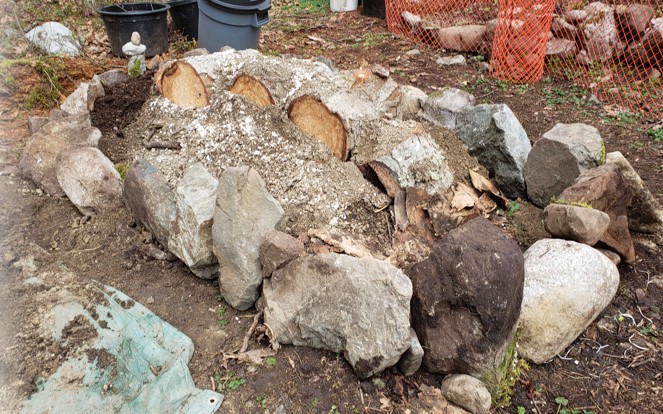
 7
7




 )
)
 11
11




Kena Landry wrote:
- It should be fairly easy to mow the grass around with a trimmer
A build too cool to miss:Mike's GreenhouseA great example:Joseph's Garden
All the soil info you'll ever need:
Redhawk's excellent soil-building series





 7
7





Invasive plants are Earth's way of insisting we notice her medicines. Stephen Herrod Buhner
Everyone learns what works by learning what doesn't work. Stephen Herrod Buhner
 7
7




Trace Oswald wrote: Every structure, tree, guild, whatever, that is in the part of the yard that is mowed has a ring of comfrey or a ring of hostas as the outermost planting. You'll never have to weed-eat again, you can just mow right up to the plant.
 5
5




Kena Landry wrote:
Trace Oswald wrote: Every structure, tree, guild, whatever, that is in the part of the yard that is mowed has a ring of comfrey or a ring of hostas as the outermost planting. You'll never have to weed-eat again, you can just mow right up to the plant.
That's a great idea. I never thought to use large-leaved plants as the border itself...
And it makes me think that instead of a raised bed, I could dig into the ground to replace part of the original dirt with wood and twigs, build a hugel on top, and have that bordered with hostas.
A build too cool to miss:Mike's GreenhouseA great example:Joseph's Garden
All the soil info you'll ever need:
Redhawk's excellent soil-building series





 4
4




If you aren't in a rush, growing sunflowers on that area for a couple of years, and then sending them to the dump, could get the lead down to a happier level. Sunflowers are used a lot in Britain for decontaminating old industrial sites from lead.It needs to be raised at least one foot, since there are moderate concerns of lead traces in my soil
Visit Redhawk's soil series: https://permies.com/wiki/redhawk-soil
How permies.com works: https://permies.com/wiki/34193/permies-works-links-threads
 6
6




There will come a day of self-sufficiency, freedom, and divine living. But for those men for whom wisdom is possible, and who do seek it, such men may truly live as gods. For men of wisdom, all things can be full of justice and mutual love. From the Wall of Oinoanda
 7
7




Lina
https://catsandcardamom.com
 5
5




Best luck: satisfaction
Greatest curse, greed
 7
7




![Filename: 2022-07-06-17_24_35.png
Description: [Thumbnail for 2022-07-06-17_24_35.png]](/t/181289/a/181867/2022-07-06-17_24_35.png)
![Filename: download-(11).jpg
Description: [Thumbnail for download-(11).jpg]](/t/181289/a/181870/download-(11).jpg)
 4
4




Real funny, Scotty, now beam down my clothes!
 7
7




 3
3




The pictures in the link are gorgeous. Have you tried this yourself, David? In my climate, I'm not convinced they'd last, but if it weren't too hard, that might not matter. The beds I built are wood, so I *know* it's not going to last!David Nick wrote:If your up for a little manual labor theirs always compressed earth, with a little cement as a stabilizer it will last for a very long time. And I always liked the look of compressed earth walls, like a painted canyon.
https://www.motherearthnews.com/diy/rammed-earth-garden-beds-zm0z14jjzkin/

Visit Redhawk's soil series: https://permies.com/wiki/redhawk-soil
How permies.com works: https://permies.com/wiki/34193/permies-works-links-threads
 7
7




Best luck: satisfaction
Greatest curse, greed
 1
1




“Peace is not absence of conflict, it is the ability to handle conflict by peaceful means.” —Ronald Reagan
Located in Western West Virginia



 1
1




Best luck: satisfaction
Greatest curse, greed
 1
1




JayGee
 1
1








Still slingin’ Avacado pits

| I agree. Here's the link: http://stoves2.com |



